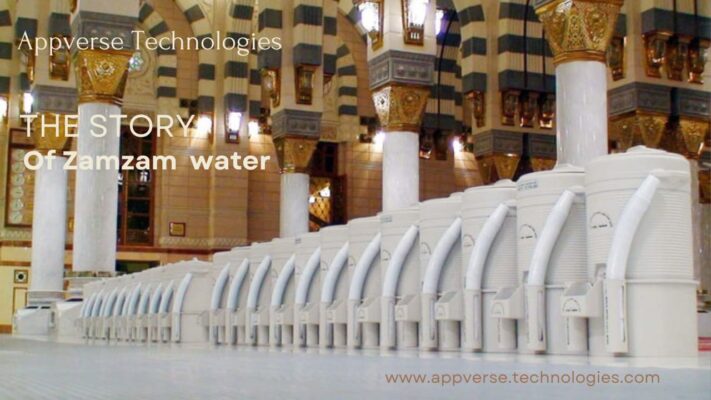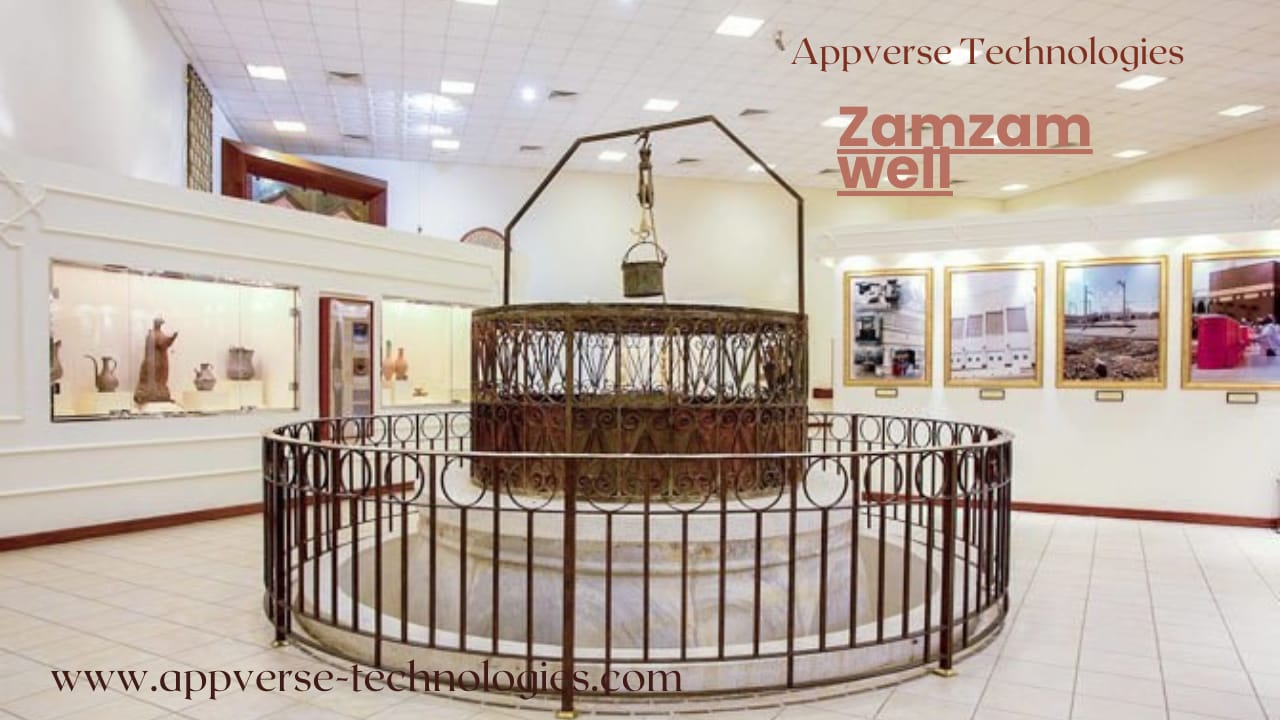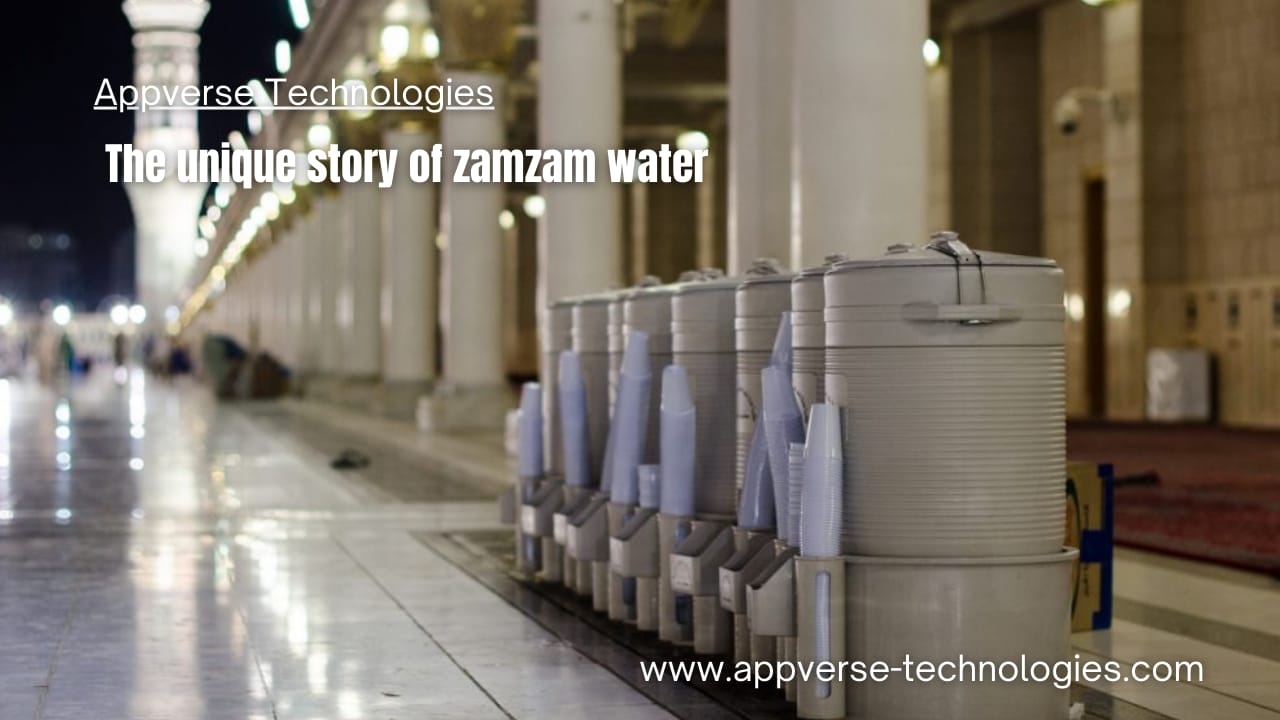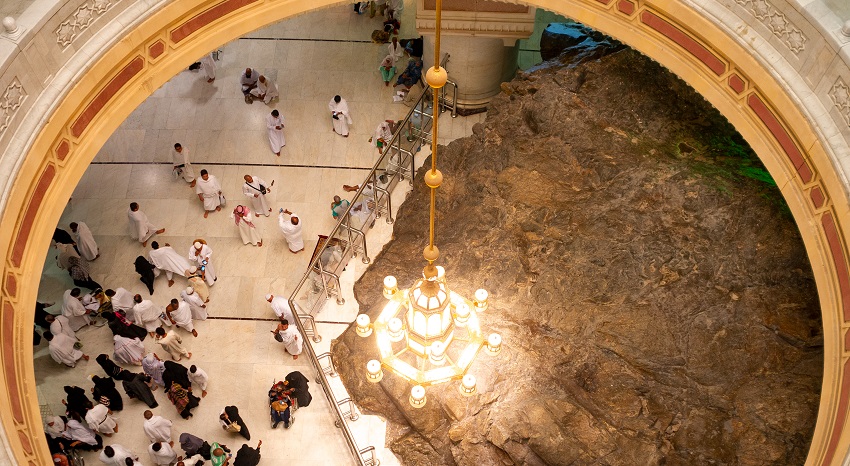
The original story of the Zamzam well is deeply rooted in Islamic tradition and is mentioned in the Quran. According to Surah Al-Baqarah, Verse 124, Prophet Ibrahim (Abraham) was commanded by Allah to leave his wife Hajar (Hagar) and their infant son Ismail (Ishmael) in the desert of Makkah.
“And (remember) when Ibrahim (Abraham) said, ‘My Lord, make this city (Makkah) a place of security, and provide its people with fruits, for they believe in Allah and the Last Day.'” (Quran 2:124)
Hajar and Ismail were left in the scorching desert with limited provisions, which soon ran out. In search of water, Hajar ran between the hills of Safa and Marwa seven times, as mentioned in Surah Al-Baqarah, Verse 158:
“Verily, Safa and Marwa are among the symbols of Allah. So, it is not a sin on him who performs Hajj or ‘Umrah of the House to walk between them. And whoever does good voluntarily, then indeed, Allah is All-Recognizing, All-Knowing.” (Quran 2:158)
Exhausted and desperate, Hajar heard a voice and called out, “Has anyone helped me?” (as mentioned in Sahih Bukhari). To her surprise, she saw Angel Jibreel (Gabriel) standing beside a spring of water, which is now the Zamzam well. The angel struck the ground with his heel, and water gushed out, saving Hajar and Ismail from dehydration.
This miraculous event is a testament to Allah’s mercy and provision for His believers, and the Zamzam well has since become a sacred site for Muslims, quenching the thirst of pilgrims for centuries.

The Quran recounts the story of Zamzam water in Chapter 14
The Story of Abraham.” According to Islamic tradition, the narrative begins with Prophet Abraham’s infant son Ismail, who was left with his mother Hajar in the desolate desert of Makkah. As the days passed, Ismail cried out in distress, parched with thirst. In response to his mother’s desperation, Allah miraculously opened the Zamzam spring, providing sustenance and relief to the duo. This sacred water has since been revered by Muslims, symbolizing Allah’s boundless mercy and provision for His faithful servants. While the Quran doesn’t explicitly mention Zamzam water, the story is deeply rooted in Islamic tradition and is widely accepted as a blessing from Allah.
What is the scientific explanation of zamzam well?
The Zamzam well, a sacred water source in Islam, has a unique scientific profile. Analysis reveals that Zamzam water comprises 34 distinct components, setting it apart from regular water. Notably, its concentrations of essential minerals like sodium (Na), calcium (Ca), chloride (Cl), and magnesium (Mg) are significantly higher than those found in average water. Furthermore, trace amounts of chromium (Cr), manganese (Mn), and titanium (Ti) are present in Zamzam water, making it a distinct and fascinating natural phenomenon. These scientific findings only add to the wonder and reverence for this blessed water, cherished by millions of Muslims worldwide.

Is Zamzam the purest water in the world?
Indeed, water from the Zamzam well is renowned for its exceptional quality, being completely free from contamination and perfectly safe for human consumption. Unlike some other water sources, genuine Zamzam water does not contain harmful substances like arsenic. To ensure its purity, the Saudi Geological Survey (SGS) conducts rigorous daily testing, involving the collection of three samples from the well. This meticulous process guarantees the water’s quality and reinforces its reputation as one of the world’s purest and most revered water sources.”
What is the story of safa and Marwa
The story of Safa and Marwa is a poignant and revered episode in Islamic history. It revolves around Hajar, the wife of Prophet Ibrahim (Abraham) and mother of Ismail (Ishmael), who found herself in a desperate search for water. With her infant son crying out of thirst, and her husband away on a divine mission, Hajar embarked on a tireless quest to quench Ismail’s thirst. In the scorching desert heat, she ran seven times between the hills of Safa and Marwa, a distance of approximately 3.6 kilometers, seeking any sign of water. This remarkable display of maternal love, perseverance, and faith has become an iconic symbol of devotion and resilience, commemorated by Muslims worldwide during the Hajj pilgrimage, where they retrace Hajar’s footsteps in a ritual known as Sa’yee, honoring her unwavering trust in Allah’s providence.

Is Zamzam water a miracle?
Zamzam water is indeed considered a miracle by many, and its unique characteristics set it apart from natural water sources. Unlike other waters, Zamzam water has distinct inorganic and radiological features, making it a singular phenomenon. One of the most remarkable aspects of Zamzam water is its continuous flow, which has remained uninterrupted since 2000 BC – an astonishing feat that has endured for over 4,000 years! This miraculous well has played a pivotal role in the history of Makkah, as its presence was instrumental in the foundation of the settlement in the valley. The Zamzam well has been a constant source of sustenance and relief for pilgrims, travelers, and residents alike, quenching the thirst of millions and cementing its reputation as a sacred and blessed water.
How many years is Zamzam water?
Zamzam water has a rich history spanning an astonishing 5,000 years, making it a truly ancient and revered water source. Situated merely 20 meters away from the sacred Kaaba, the Zamzam well is a revered destination for pilgrims from around the world, who flock to taste the holy water. This incredible well is believed to be the oldest continuously flowing well on earth, with water gushing from its depths for an unprecedented 5,000 years. This remarkable feat has made Zamzam water a symbol of enduring blessings and a testament to the miracles of the divine. For centuries, pilgrims have traveled to Makkah to drink from this sacred well, seeking spiritual rejuvenation and physical refreshment. Its proximity to the Kaaba, the holiest site in Islam, only adds to its significance, making Zamzam water an integral part of the Islamic faith and a source of inspiration for millions.

What is the spiritual significance of Zamzam water?
The spiritual significance of Zamzam water is deeply rooted in its miraculous origins and profound blessings. According to Islamic tradition, the well was created by God’s divine intervention to quench the thirst of Hagar and her infant son, Ismail, who were stranded in the scorching desert. This divine provision has rendered Zamzam water a revered symbol of purity, blessings, and God’s infinite mercy. For centuries, Muslims have cherished Zamzam water for its numerous benefits, believing it to be a potent cure for various physical and spiritual ailments. Its waters are thought to possess healing properties, purify the heart and soul, and bring solace to those who drink from it with faith and devotion. As a result, Zamzam water has become an integral part of Islamic tradition and a cherished blessing for pilgrims and believers worldwide.
What is the meaning of Zamzam?
Zamzam water is named after the well of Zamzam, which is located in the Masjid al-Haram in Mecca, Saudi Arabia. The word “Zamzam” is derived from the Arabic verb “zamzama,” which means “to burst forth” or “to flow abundantly.” This refers to the miraculous story of the well’s creation, where water burst forth from the ground to quench the thirst of Hagar and her son Ismail.
In essence, Zamzam water represents:
- Divine provision and mercy
- Abundant blessings and purity
- Spiritual rejuvenation and healing
- A connection to the sacred history of Islam
Drinking Zamzam water is considered a blessed and rejuvenating experience for Muslims, and its significance extends beyond its physical properties to encompass spiritual and emotional renewal.


Alizay Ali is a skilled HR manager with two years of experience at AppVerse Technologies. With her strong interpersonal skills and expertise in talent acquisition, employee engagement, and HR operations, she plays a pivotal role in fostering a positive and productive work environment. She with a passion for learning and a drive to succeed, she eagerly embraces new challenges and is poised to make her mark in the ever-evolving world of technology
